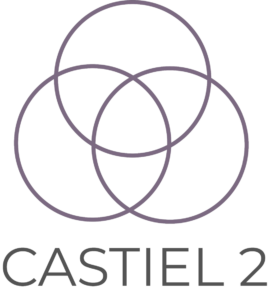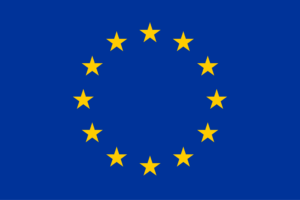- Homepage
- >
- Cardiovascular Medicine
CompBioMed
[su_list icon=”icon:check” icon_color=”#FED538″ indent=”0″ class=””]Living Heart
SIMULIA Living Heart Human Model is a high-fidelity multiphysics model of a healthy, 4-chamber adult human heart and proximal vasculature. The dynamic response of the Living Heart is governed by realistic electrical, structural, and fluid (blood) flow physics. With this model, medical professionals, researchers, and device manufacturers will be able to rapidly conduct virtual experiments in a highly realistic 3D environment. The Living Heart can readily be used to study cardiac defects or diseased states and explore treatment options by modifying its geometry, loading, or electromechanical properties. In addition, medical devices can be inserted into the model to study their influence on cardiac function, validate their efficacy, and predict their reliability under a wide range of operating conditions.
CoE: ComBioMed
InSilicoMRI
InSilicoMRI provides a framework to predict the overheating of a medical device during an MRI scan. This software allows to evaluate the radiofrequency (RF) safety analysis of a passive device exposed to a 3T MRI birdcage coil field following the directives of ASTM F2182 standard. The simulation calculates the EM fields, SAR, and thermal heating after 900s of RF exposure. This application use Microsoft Azure cloud services to run the simulation.
CoE: ComBioMed
PolNet
PolNet is a software tool for the computer simulation of blood flow in realistic microvascular networks imaged with a wide variety of microscopy and clinical imaging techniques. To date, PolNet has contributed to: a) uncovering the relationship between blood flow and blood vessel biology and its importance for correct vascularisation of tissues, and b) developing ways of predicting retinal vascular damage in diabetic retinopathy patients. PolNet facilitates the adoption of cutting-edge computer simulation technology by non-experts in the Biosciences.
CoE: ComBioMed
Palabos
Palabos is Lattice Boltzmann Method (LBM) solver, available as open source, and massively parallel. The team of Prof Bastien Chopard at University of Geneva (CH) has specialised it to solve a number of relevant biomedical problems, including simulation of blood flow, and bone cement penetration during vertebroplasty. The software has specific features to deal with biomedical problems, reading medical images. Palabos was tested on CADMOS BlueGene/Q (Switzerland), UniGe Baobab (Switzerland).
- Palabos – Vertebroplasty Simulator: This solution, currently in its final stage of development, uses Palabos to provide a vertical solution for the pre-operative planning of vertebroplasty. Micro CT images of the damaged vertebral body are converted into an LBM model, which simulates multiple cement injections with different access point and cement volume. The simulation results predict exact filling patterns of the injected cement. Plans of future developments include converting the results into a finite element model, which will predict the increase in biomechanical strength with respect to the untreated vertebra.
- Palabos – Flow Diverter Simulator: This solution, currently in its final stage of development, uses Palabos to provide a vertical solution for the pre-operative planning for the insertion of flow diverters. CT scan images of blood vessels with aneurysms or other anomalies are converted into an LBM model. Different types of flow diverters are numerically inserted to test their impact on the blood flow pattern. Simulation output includes wall shear stress distribution in the aneurysm to predict the rate of blood clotting.
CoE: ComBioMed
OpenBF
OpenBF is an open-source 1D blood flow solver based on MUSCL finite-volume numerical scheme, written in Julia and released under Apache 2.0 free software license. The software is developed by Alessandro Melis and Alberto Marzo at the Insigneo Institute at the university of Sheffield (UK). The solution is currently exposed as open source software; it is also installed on SURFsara’s HPC-Cloud, where it is used for large-scale sensitivity analysis and uncertainty quantification studies.
CoE: ComBioMed
HemoCell
HemoCell, developed by the team of Prof Alfons Hoekstra at the University of Amsterdam (NL), is a high-performance library to simulate the transport properties of dense cellular suspensions, such as blood. It contains validated material model for red blood cells and additional support for further cell types (white blood cells, platelets). The blood plasma is represented as a continuous fluid simulated with an open-source Lattice Boltzmann Method (LBM) solver. The cells are represented as Discrete Element Method (DEM) membranes coupled to the plasma flow through a tested in-house immersedboundary implementation. HemoCell is computationally capable of handling a large domain size with a high number of cells (> 10^4-10^6 cells). The code is currently installed and optimised for Cartesius, Lisa, and SuperMUC (Leibniz Supercomputing Centre system), and can be used by anyone with a valid account and CPU allocation on any of these systems.
CoE: ComBioMed
HemeLB
HemeLB, developed by the team of Prof Peter Coveney at University College London (UK), is a software pipeline that simulates the blood flow through a stent (or other flow diverting device) inserted in a patient’s brain. The aim is to discover how different stent designs (surface patterns) affect the stress the blood applies to the blood vessel, in particular in the region of the aneurysm being treated. The pipeline also allows the motion of magnetically steered particles, for example coated with drugs, to be simulated and estimates made as to where they might statistically end up. The HemeLB setup tool voxelises the geometry at the given resolution, and HemeLB (lattice-Boltzmann CFD solver) then simulates the fluid flow within that geometry, using the given velocity-time profiles for each inlet. Once complete, the simulation output is analysed using the hemeXtract utility, which can produce images of cross-sectional flow, or 3D shots of wall shear stress distribution in the geometry using ParaView visualisation software. HemeLB is installed, optimised, and available for use to any user with a valid account and CPU-time on ARCHER, Cartesius, SuperMUC, Prometheus and Blue Waters. The UCL team also provide consulting to biomedical companies and clinical users.
CoE: ComBioMed
Alya
Alya is a high performance computational mechanics code to solve complex coupled multi-physics / multi-scale / multi-domain problems, which are mostly coming from the engineering realm. Among the different physics solved by Alya we can mention: incompressible/compressible flows, non-linear solid mechanics, chemistry, particle transport, heat transfer, turbulence modeling, electrical propagation, etc.
From scratch, Alya was specially designed for massively parallel supercomputers, and the parallelization embraces four levels of the computer hierarchy. 1) A substructuring technique with MPI as the message passing library is used for distributed memory supercomputers. 2) At the node level, both loop and task parallelisms are considered using OpenMP as an alternative to MPI. Dynamic load balance techniques have been introduced as well to better exploit computational resources at the node level. 3) At the CPU level, some kernels are also designed to enable vectorization. 4) Finally, accelerators like GPU are also exploited through OpenACC pragmas or with CUDA to further enhance the performance of the code on heterogeneous computers.
Multiphysics coupling is achieved following a multi-code strategy, relating different instances of Alya. MPI is used to communicate between the different instances, where each instance solves a particular physics. This powerful technique enables asynchronous execution of the different physics. Thanks to a careful programming strategy, coupled problems can be solved retaining the scalability properties of the individual instances.
The code is one of the two CFD codes of the Unified European Applications Benchmark Suite (UEBAS) as well as the Accelerator benchmark suite of PRACE.
CoE: CoEC, ComBioMed, EoCoE, EXCELLERAT, RAISE



